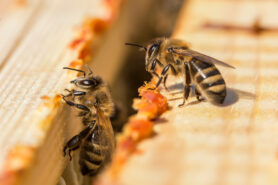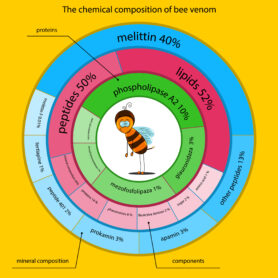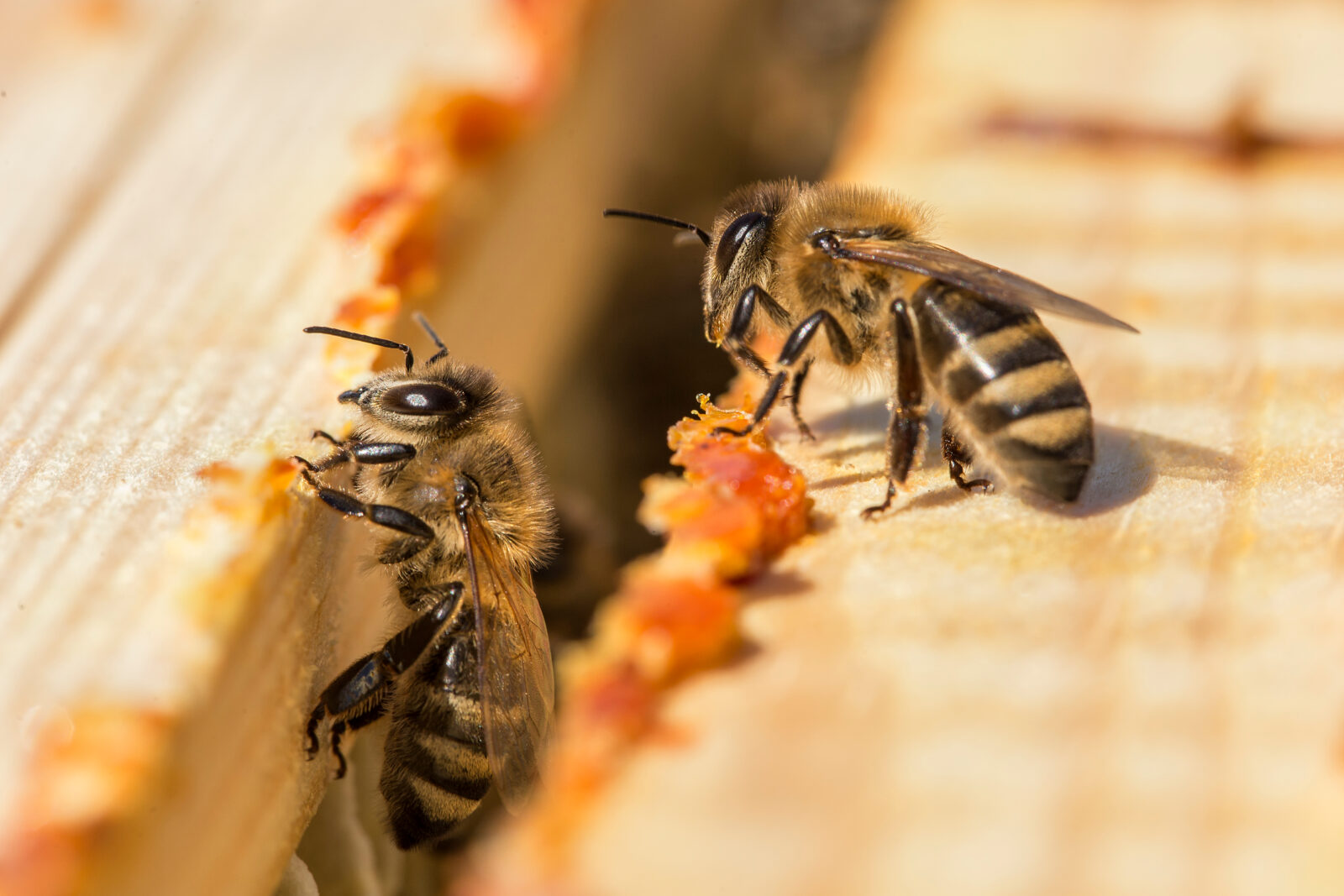To Bee or not to Bee?
The medicinal effect of bee stings
Written by: Nilda Tatipata
Afraid of a bee sting? No need, it can even be good for you! It may sound crazy, since the venom of a bee causes localized itching and pain. In addition, the side effects of a sting can be fatal if you are allergic to bees. Yet, bee stings have been widely used within traditional Chinese medicine for over 3,000 years to combat chronic pain and inflammation. This alternative medicine is also known as “apitherapy”. Recently, Chinese scientists even claimed that apitherapy can protect against the coronavirus. What exactly is apitherapy? And what do other scientists say?
So the next time you are sick, you can look for a bee to sting you. Or does apitherapy work differently after all? We asked apitherapist Ruby van den Heuvel to explain more about this alternative medicine approach. In 2003 she and Josien Boetje founded the ‘Bee Healthy’ knowledge center, where they provide information and education on apitherapy.
Apitherapy
Apitherapy focuses on supporting human and animal health through the use of bees and bee products. Apitherapy is therefore much broader than just the use of bee venom,’ says van den Heuvel. ‘There is also a lot of use of bee products such as honey and propolis; a mixture of tree resin and wax that is used by bees to protect themselves from bacteria and fungi.’ So apitherapists use a variety of products related to the bee.

Bees at work with propolis. Foto: Shutterstock.
Honey in your tea when you have a sore throat is a good example, but what about bee venom? So how is that used? ‘In therapy with bee stings, whole stings or micro stings can be used. With a whole sting, the bee’s entire venom bladder is used, but with micro stings, a small amount of venom is delivered each time. In this way you can use one sting on a larger surface.’ Van den Heuvel explains that this form of apitherapy is used in particular to slow down the progression of diseases such as Parkinson’s, Multiple Sclerosis (MS) and Amyotrophic Lateral Sclerosis (ALS). ‘For pain conditions, such as joint pain due to joint wear, a cream containing bee venom can also be used. So then the venom is incorporated into a cosmetic product.’
Dit bericht bekijken op Instagram
Yet it remains crazy, using poison as medicine. If we are to believe The Dutch ‘Dikke van Dale’ Dictionary, poison is equivalent to a “substance that has a harmful or lethal effect on the body. That doesn’t sound particularly healthy. But when a bee stings someone, a cocktail of both toxins and good substances is released. ‘Because of this composition, bee venom also has a strong anti-inflammatory, analgesic effect, and can support the immune system.’ explains van den Heuvel.

The chemical composition of bee venom. Foto: Shutterstock
What about the science?
So, if we look at experiences from apitherapy, it seems that bee venom can be good for you. On the internet you can read a lot of positive stories about apitherapy. But has the positive effect of bees also been established by scientists? We dove into the literature to find the answer.
The most recent publication is a study by biomedical scientist Gwang-Muk Choi of Kyung Hee University in Seoul. In Nature Scientifics Reports, February 10, 2021, he describes the anti-inflammatory and pain-relieving effect of the molecule phospholipase A2 in mice with joint wear. This molecule constitutes about twelve percent of the bee venom cocktail and elicits a specific chemical reaction in the human body. This reaction stimulates the immune system, as it were. Ultimately, this allows immune cells to better respond to the chronic inflammation that causes joint wear. As Gwang-Muk describes it, the effectiveness of bee venom therapy against osteoarthritis is “directly attributable to phospholipase A2, one of the main components of bee venom. In other words, bee venom at least shows a medicinal effect in mice!
When it comes to the effectiveness of bee sting therapy in humans, scientists do not yet dare to draw firm conclusions. Researchers do point out the potency of the specific substances present in the bee venom cocktail. In addition to the previously mentioned phospholipase A2, mellitine, the most toxic substance of the cocktail, is in the spotlight. For example, researchers have seen in the lab that mellitine can successfully kill cancer cells and various viruses. Unfortunately, they don’t yet dare to test whether this works in humans. That’s because they haven’t yet clarified the exact molecular effects of mellitin on the body.
Even though some scientists are very positive about the effect of bee venom, it is good to remain critical. We sometimes see that the results differ considerably between studies. For example, scientists from China reported last year that therapy with bee venom would protect against the coronavirus. They based this on a survey of 5115 beekeepers and 121 people who received apitherapy. This showed that no one had developed symptoms of corona. It almost looked like the whole world would have to make a trip to the local beekeeper for a vaccine with bee venom! But German scientist Heidrun Männle threw a spanner in the works. He decided to repeat the survey, this time among 234 German beekeepers. In contrast to the Chinese survey, it turned out that 47 beekeepers did become infected with the coronavirus, two of whom did not even survive the infection. Alas!
Whether you really become healthier from a single bee sting remains to be seen. But if we listen to the experiences from apitherapy and look at the science, it seems that components from bee venom can indeed work to your advantage. Whether it will also be applied in medicines we will have to wait and see.
Did you know that you can also help the bee with its health? You can do so by planting gestation plants in your garden. The more, the better. They help the bee by providing the right nectar and pollen.
Translated from Dutch

